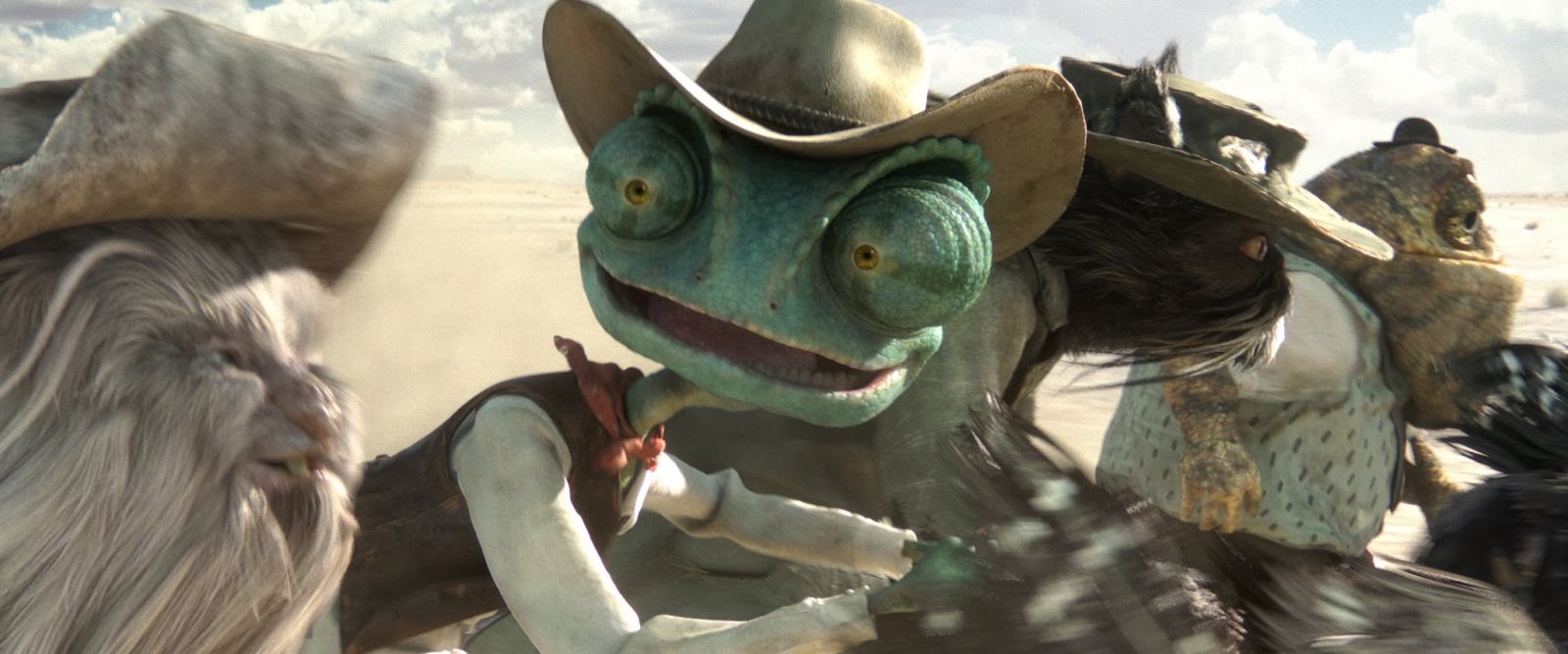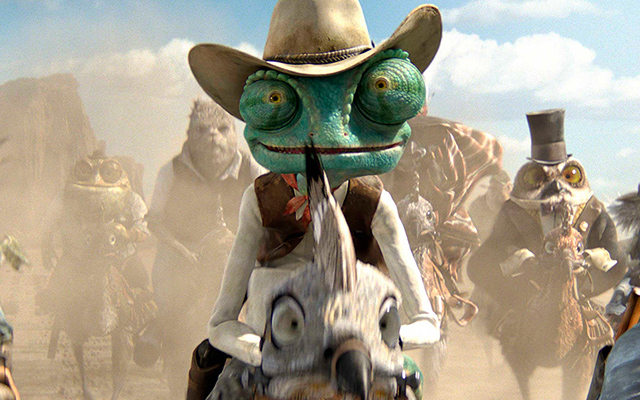Rango (2011)

Rango (2011), directed by Gore Verbinski and produced by Nickelodeon Movies and Industrial Light & Magic, is a highly creative and visually stunning animated film that blends Western genres with classic adventure storytelling. The film stars Johnny Depp as the voice of Rango, a chameleon with an identity crisis who ends up becoming the unlikely sheriff of a small, desert town called Dirt. It stands out from many other animated films by using a unique art style, an all-star voice cast, and an engaging narrative that appeals to both children and adults, offering both entertainment and commentary on personal growth, responsibility, and the nature of heroism.
At the heart of the story is Rango, a pet chameleon who, after accidentally finding himself in the desert town of Dirt, assumes the role of sheriff despite being completely unqualified. The film opens with Rango’s solitary existence, spent acting out imaginary adventures in his tank. However, after a freak accident that leaves him stranded in the Mojave Desert, Rango embarks on a journey that will force him to confront his insecurities and discover who he truly is.
Rango’s first encounter with the citizens of Dirt, a town plagued by drought and lawlessness, begins when he accidentally kills a snake and is immediately mistaken for a hero. The town, desperate for a leader and lacking a legitimate sheriff, quickly appoints him as the new lawman. However, Rango’s newly assumed identity is nothing more than a façade — a chameleon constantly shifting and trying on different personas. He’s an imposter, but in a world where appearances are everything, he is able to convince others that he is the answer to their problems.
The film introduces a range of memorable characters, each of whom adds flavor to the narrative. Among these is Beans, voiced by Isla Fisher, a tough and determined iguana who initially views Rango with skepticism. Her character provides a grounded balance to Rango’s impulsive nature. Additionally, the town’s various citizens, including an old, wise tortoise named Roadkill (Alfred Molina), and a gang of bandits led by the menacing outlaw Rattlesnake Jake (Bill Nighy), further flesh out the town’s quirky and dangerous atmosphere. These characters contribute to the exploration of Rango’s transformation from an insecure and dishonest chameleon to a reluctant, but true, hero.
The central mystery of the film revolves around the water crisis in Dirt, which is exacerbated by the arrival of an enigmatic figure known as the “Mayor.” The town is in the midst of a severe drought, and the townsfolk, who are dependent on water for survival, are struggling. As Rango unravels the mystery, he uncovers a plot involving greed, corruption, and the manipulation of the town’s water supply. The film cleverly intertwines this theme with its Western genre influences, evoking classic tales of corruption in small frontier towns, such as Chinatown (1974) and The Treasure of the Sierra Madre (1948).
Rango is notable for its animation, which stands out as some of the most detailed and visually striking of any animated film released at the time. The character designs are unique and often exaggerated, contributing to the film’s humor and charm. The town of Dirt itself is a dusty, decaying place, visually reminiscent of a ghost town in the American West, with its rickety buildings and dry, cracked earth. The rich texture of the animation gives the film a gritty, lived-in quality that enhances the sense of realism, despite the fact that the characters are anthropomorphic animals.
The use of lighting in Rango is also exceptional, often playing a key role in setting the mood of each scene. Whether it’s the sun-drenched, harsh desert landscape or the shadowy, menacing atmosphere of a night-time shootout, the lighting helps to underscore the emotional depth of the film. The visuals serve as a powerful backdrop to the film’s narrative, drawing heavily from Western film tropes and the iconography of the American frontier, while still offering something fresh and unexpected.
One of the standout elements of Rango is its ability to appeal to both younger audiences and adults. While the film has plenty of humor, slapstick moments, and colorful characters that will entertain children, it also features several adult-oriented references and a deeper narrative that tackles themes like self-identity, the nature of heroism, and the moral complexity of society. Rango’s internal struggle with his identity and the responsibilities he inherits as sheriff mirror the classic Western hero’s journey, where the protagonist learns about personal sacrifice and the power of truth.
A key moment in the film is when Rango is forced to confront his fears and accept that his identity as a hero is rooted in the truth — not in the persona he has created for himself. His transformation is gradual, and the lessons he learns about bravery, honesty, and leadership come through a series of trials. By the end of the film, Rango has embraced his true self and stepped up to become a hero not by pretending to be someone else, but by accepting his own shortcomings and taking responsibility for his actions.
The film’s soundtrack, composed by Hans Zimmer, perfectly complements the tone and setting of the movie. The score uses traditional Western-style instrumentation, including lush orchestral arrangements and twangy guitars, to evoke the spirit of classic Western films while also adding a modern touch. Zimmer’s music amplifies the emotions of the film’s key moments, from high-octane action sequences to quieter, introspective scenes that focus on Rango’s journey of self-discovery.
Rango received critical acclaim for its animation, voice acting, and unique approach to storytelling. The film was praised for its wit, creativity, and subversion of the typical animated movie formula. It earned several prestigious awards, including the Academy Award for Best Animated Feature in 2012, cementing its place as one of the standout animated films of its era.
Ultimately, Rango is a film about finding one’s identity and the importance of taking ownership of who you are. Through its vivid animation, memorable characters, and bold narrative choices, it stands as an exceptional example of animated filmmaking that appeals to both children and adults alike. With its deep themes, exciting action, and sharp wit, Rango is a unique and timeless film that continues to resonate with audiences today.











